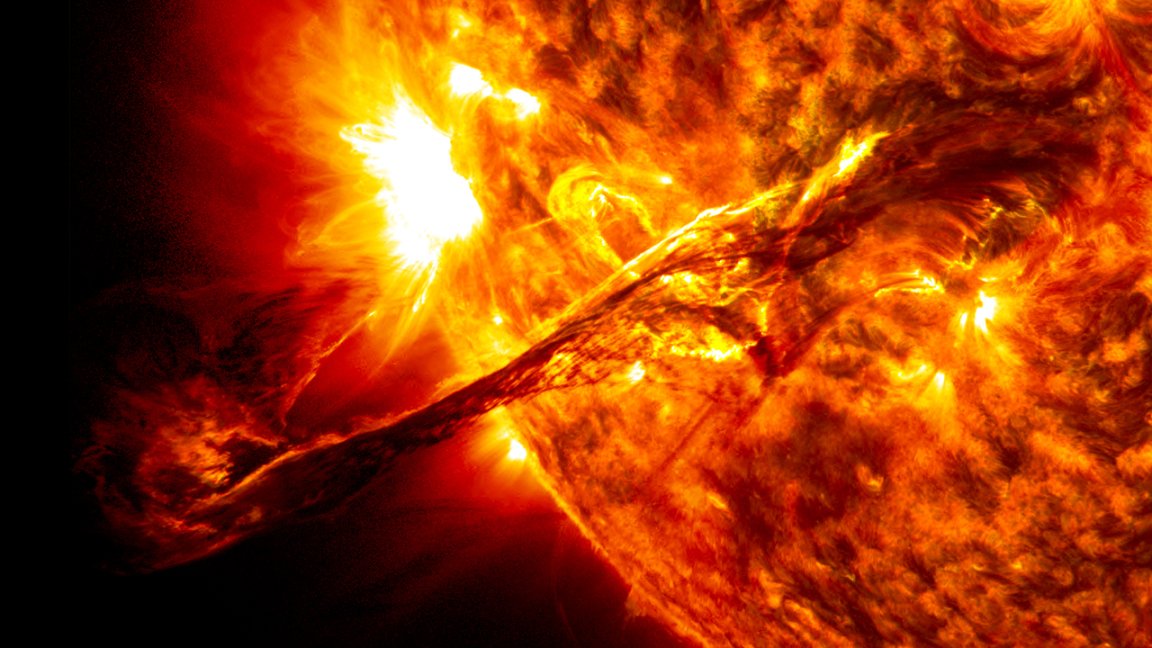
A Universal Model
The sun is volatile, capable of unleashing huge amounts of plasma in outbursts that affect the space around it — including the space near Earth. There are two types of these solar eruptions: coronal ejections, which are smaller bursts of plasma, and coronal mass ejections (CMEs), which are large eruptions that release plasma and high-speed magnetic fields.
We know they happen, but we haven’t really figured out how they happen. Now, thanks to researchers from the Durham University in UK and NASA’s Goddard Space Flight Center, we have a theoretical model that could explain both types of coronal jets. According to their study, published in the journal Nature, both occurrences are the result of magnetic field lines in the surface of the sun, above the jets, breaking apart and rejoining.
“It was previously thought that there were different drivers for the varying scales of eruptions from the Sun, but our research provides a theoretical universal model for this activity, which is very exciting,” lead researcher Peter Wyper from Durham said in a press release.

It’s All About Prediction
Using this theoretical universal model, dubbed the “breakout model,” the researchers believe that it may be possible to predict when solar flares will occur. As Wyper explained it: “A greater understanding of solar eruptions at all scales could ultimately help in better predicting the Sun’s activity.”
If proven, the breakout model could help us prepare for solar flares — particularly large-scale CMEs which are known to disrupt radio transmissions and satellite communications by sending huge amounts of electromagenetic radiation. They are tend to trigger aurorae in the Earth’s poles. This phenomenon was last recorded in 1859, during what’s now known as the Carrington Event. Such CMEs today could prove dangerous for astronauts in space. That being said, the next step is to confirm the breakout model using high-resolution observations of the solar atmosphere.
“Within a unified context, we can advance understanding of how these eruptions are started, how to predict them, and how to better understand their consequences,” said Richard DeVore one of the researchers at NASA’s Goddard Space Flight Center.